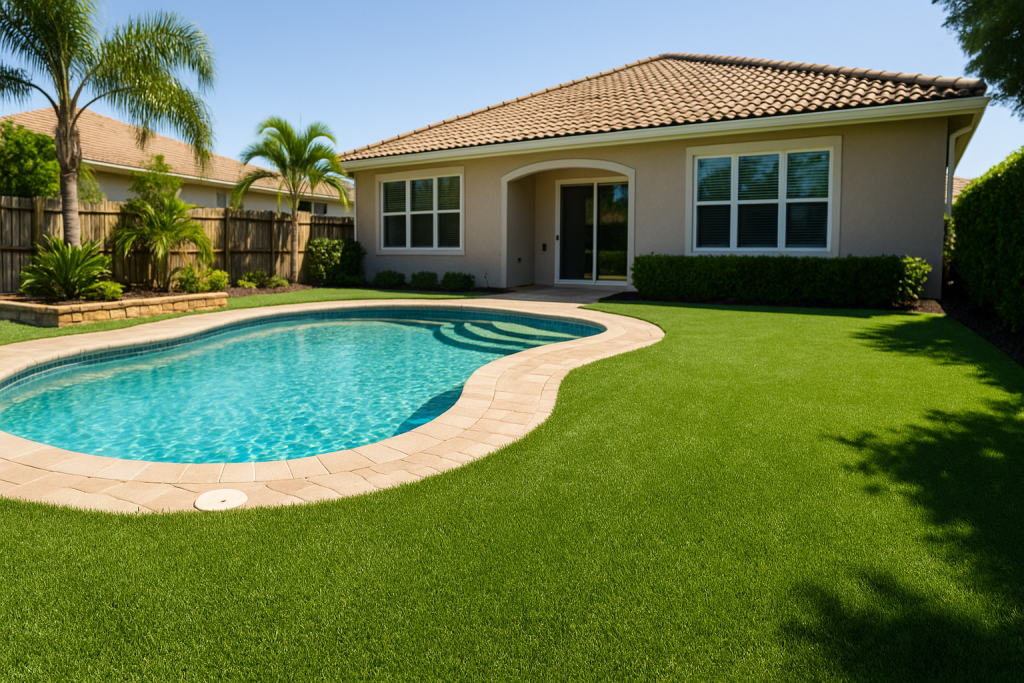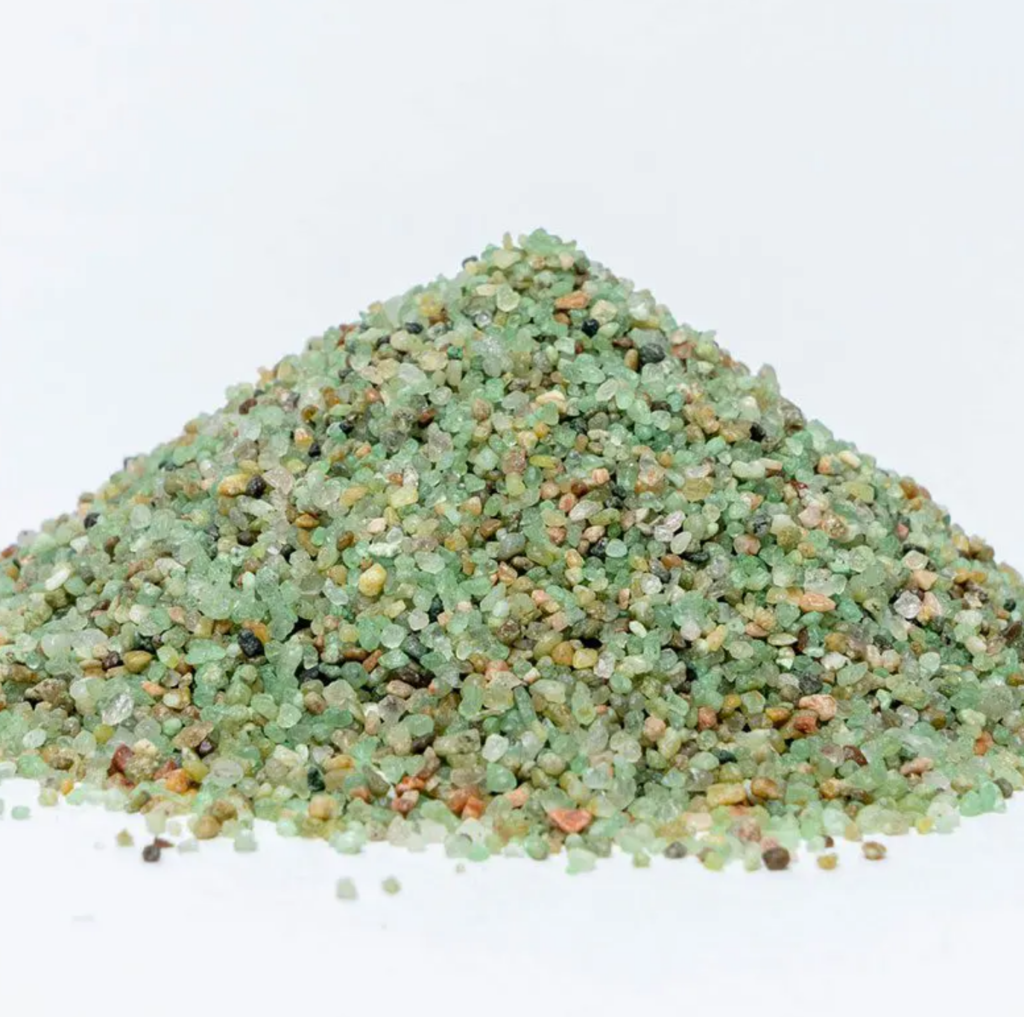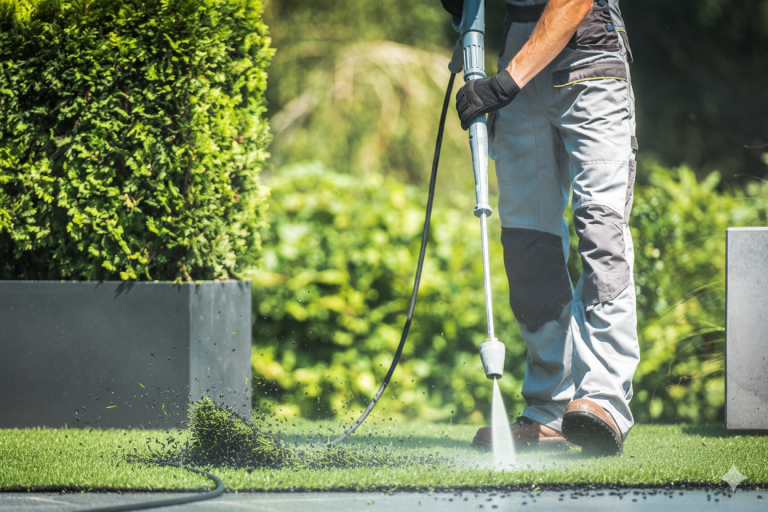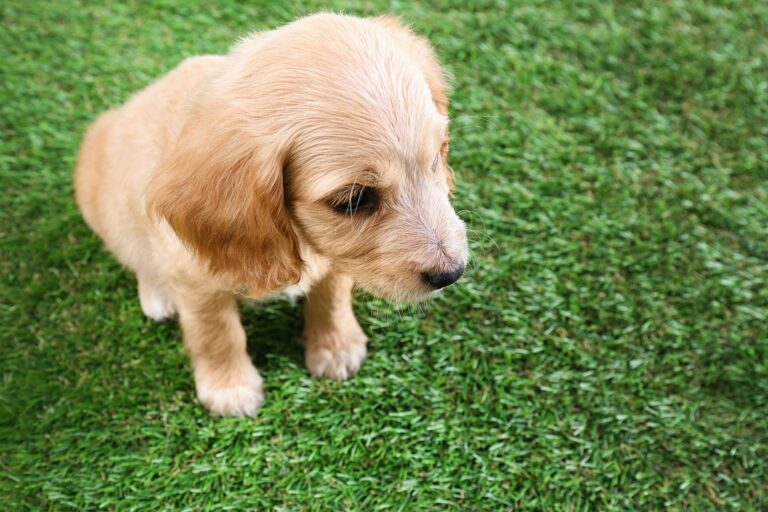Artificial turf has become a popular landscaping choice across South Florida, especially for homeowners who want a lush, green lawn without constant mowing, watering, or fertilizing. But one question always comes up: Does artificial turf get too hot in the Florida sun?
The short answer is yes. Turf can get warmer than natural grass, but with the right materials, installation, and care, it’s completely safe and comfortable for both families and pets. In this guide, we’ll break down why turf heats up, how it compares to other surfaces, and what you can do to keep your lawn cool year-round.
Why Does Artificial Turf Get Hot?
Artificial grass is made from synthetic fibers (polyethylene, polypropylene, or nylon) that absorb heat from the sun’s rays. In South Florida, where temperatures regularly push past 90°F with high humidity, this can make turf surfaces feel hot to the touch.
A few reasons turf gets hotter than natural grass:
- Lack of moisture: Real grass stays cooler because of evaporation. Turf has no natural cooling mechanism.
- Blade shape and density: Flat, tightly packed fibers absorb and hold more heat. Newer W-shaped or C-shaped blades reflect light better and stay cooler.
- Color: Darker turf shades trap more heat than lighter green options.
How Hot Does Turf Actually Get in Florida?
Let’s compare turf temperatures against other common backyard surfaces:
Natural Grass 85 – 95°F
Artificial Turf 100 – 150°F
Concrete / Pavers 120 – 160°F
Sand 110 – 130°F
Wood Decking 110 – 140°F
While turf can get warm, it’s not the hottest surface in your yard. Concrete, pool decks, and even dark pavers can reach higher temps.
Factors That Influence Turf Temperature
Not all turf is created equal. Here’s what makes the difference:
Type of Infill
- Silica sand holds heat longer.
- Cooling infills like Envirofill or T°Cool can drop turf temps by 15–30°F.
Amount of Shade
- Turf in direct sun will be warmer than areas shaded by palm trees, pergolas, or umbrellas.
Blade Technology
- Newer turf fibers are UV-stabilized to resist heat buildup and fading.
Airflow & Location
- Ground-level turf with open airflow stays cooler than enclosed rooftop installations.
Is Hot Turf Dangerous?
The main concern with warm turf is comfort, not danger. Here’s what you should know:
- For Pets: Dogs’ paws are more sensitive than human feet. If you can’t comfortably hold your hand on the turf for 5 seconds, it’s too warm for pets.
- For Kids: Turf is softer and safer than concrete or pavers, but small children may feel heat if barefoot in direct sun.
- For Longevity: Extreme heat won’t melt high-quality turf, but low-grade turf with poor UV resistance can curl, fade, or weaken over time.
How to Keep Artificial Turf Cool in Florida
The good news is, you don’t have to worry about hot turf if you take a few precautions.
1. Choose Cooling Infill
Infill sits between turf blades and impacts surface temperature. There are several types of turf infill. Envirofill, Optifill and T°Cool (activated gel) infill are designed to reduce heat and odors.
2. Add Shade
Strategic landscaping (palm trees, shrubs, shade sails, or pergolas) keeps turf much cooler and adds curb appeal.
3. Hose Down Turf Before Use
On extremely hot days, a light rinse with a garden hose can drop the surface temperature instantly.
4. Install Proper Drainage
A turf system with air pockets and drainage layers allows heat to dissipate more effectively.
5. Pick the Right Turf
High-quality turf with UV inhibitors and lighter blade colors performs far better in South Florida’s sun than bargain turf.
FAQs About Turf Heat
DOES ARTIFICIAL TURF GET HOTTER THAN CONCRETE?
No. Concrete and pavers can reach higher temperatures than turf in Florida. Turf typically feels more comfortable underfoot.
CAN TURF MELT IN THE FLORIDA SUN?
Not if you choose high-quality turf. Cheap turf without UV protection can warp, but premium turf products are designed to withstand extreme sun exposure.
WHAT IS THE BEST INFILL TO KEEP TURF COOL?
Cooling infills like Envirofill or T°Cool are the best choice. They can lower surface temps by 15–30°F compared to standard silica sand.
HOW DO I PROTECT MY PETS’ PAWS ON HOT DAYS?
Check turf with your hand before letting pets play. Provide shaded areas and fresh water. Rinsing turf before playtime is an easy fix.
DOES TURF TEMPERATURE VARY BY BRAND?
Yes. Higher-end turf with UV inhibitors, lighter color tones, and advanced fiber shapes will stay cooler than budget options.
Turf Heat in South Florida Is Easily Manageable
Artificial turf can get warm in Florida’s sun, but so can natural surfaces like pavers, concrete, and sand. The difference is that with proper synthetic turf installation, cooling infill, and shade, turf is safe, comfortable, and far more attractive than alternatives.
At Big Dogs Artificial Turf, we install turf systems designed specifically for Florida’s climate, so your lawn looks great and stays functional all year.









